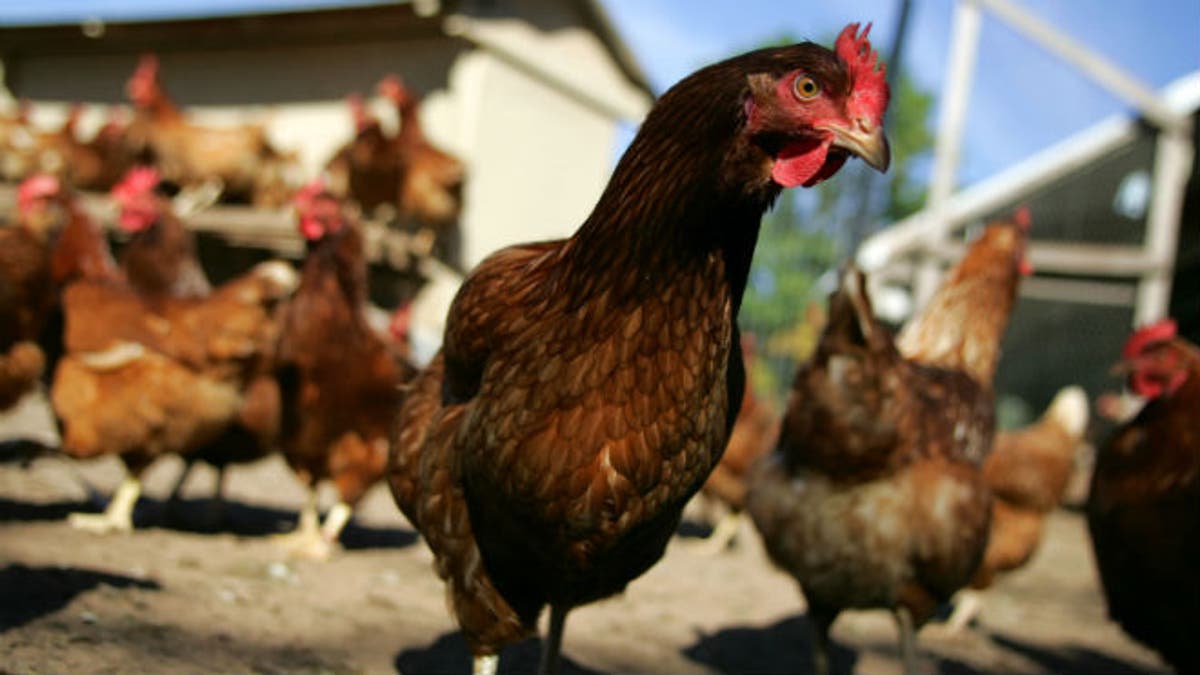
(REUTERS/Joshua Roberts)
Two highly pathogenic strains of avian influenza (HPAI) have been found in 14 U.S. states since December, prompting partial to total bans on imports of U.S. poultry and egg products to other countries that were valued at more than $6 billion last year.
The H5N2 strain has been reported in Arkansas, Idaho, Iowa, Kansas, Kentucky, Minnesota, Missouri, Montana, North Dakota, Oregon, South Dakota, Washington and Wisconsin. It has also been identified on farms in Ontario, Canada. The H5N8 strain has been identified in California and also in Idaho, according to the U.S. Department of Agriculture (USDA).
Following is a timeline of the spread of the viruses, according to the USDA's Animal and Plant Health Inspection Service (APHIS), and responses by the industry and trade partners.
Dec. 19, 2014 - Highly pathogenic H5N8 avian influenza strain confirmed in a backyard mixed poultry flock of 130 birds in Douglas county, Oregon.
Dec. 20 - South Korea, one of the top importers of U.S. poultry, halts imports of poultry and poultry products from the United States, a market valued at $113 million in 2014, in response to the HPAI finding.
Jan. 3, 2015 - The first case of the highly pathogenic H5N2 avian influenza strain confirmed in a backyard mixed poultry flock of 140 birds in Benton county, Washington. The virus is believed to have been spread by wild birds migrating along the Pacific flyway which runs along the U.S. West Coast.
Jan. 6 - Mexico, the largest market for U.S. poultry valued at $1.2 billion in 2014, bans imports from states with confirmed cases.
Jan. 7 - No. 2 U.S. poultry importer Canada, which bought $589 million in poultry and products last year, bans imports from affected areas. The ban is later widened to include all or parts of 13 states. Ottawa imposed the ban despite several cases of bird flu within its own borders.
Jan. 8 - Imports of U.S. poultry, poultry products and eggs banned by China, a $315 million market in 2014.
Jan. 23 - The first commercial flock hit by H5N8 in Stanislaus county, California. The farm had 134,400 turkeys.
Feb. 12 - Veterinary officials confirm H5N8 in the first commercial chicken flock. The Kings county, California, flock had 112,900 birds.
March 4 - The first instance of HPAI along the Mississippi flyway, which runs from the Gulf of Mexico to the northern Midwest along the Mississippi River valley, is confirmed in a commercial flock of 26,310 turkeys in Pope county in Minnesota, the country's top turkey producing state.
April 7 - The H5N2 strain strikes a 310,000-bird commercial turkey flock in Meeker county, Minnesota, bringing the total number of birds in infected flocks above 1 million.
April 13 - H5N2 is confirmed in the first commercial chicken operation in a 200,000-bird flock of egg-laying hens in Jefferson county, Wisconsin. [ID:nL2N0XA126]
April 20 - The biggest outbreak so far as H5N2 is confirmed in 3.8 million egg-laying hens in Osceola county, Iowa. The finding in the country's top egg producing state prompts Mexico to expand its import ban to include live birds and eggs from Iowa. [ID:nL1N0XH1UF]
April 20 - Wisconsin declares a state of emergency and authorizes the state's National Guard to help contain the virus.
April 22 - The USDA reports a year-over-year surge in frozen chicken stocks as the bird flu outbreak slows exports.
April 23 - Minnesota declares a state of emergency. State officials say they are offering prescriptions for the antiviral drug Tamiflu to people who have been in contact with infected flocks. [ID:nL1N0XK3FP]
April 26 - The National Guard is called on to deliver water for use in efforts to contain the virus' spread in Minnesota.
April 27 - Iowa's Department of Agriculture and the USDA say initial tests have found probable bird flu outbreaks at five commercial poultry sites in Iowa containing more than 6 million birds. One site was confirmed as positive for HPAI a day later. If the other four are confirmed, the country's outbreak would reach more than 15.1 million birds, just short of the largest-ever U.S. avian influenza outbreak of 17 million birds in 1983 and 1984. [ID:nL1N0XO22B]
April 28 - The USDA confirms H5N2 in three more flocks, including a flock of 1.7 million chickens in Sioux county, Iowa, bringing the state's confirmed tally to more than 5.5 million birds. The three new confirmations lift the nationwide confirmed total to more than 11 million birds.
